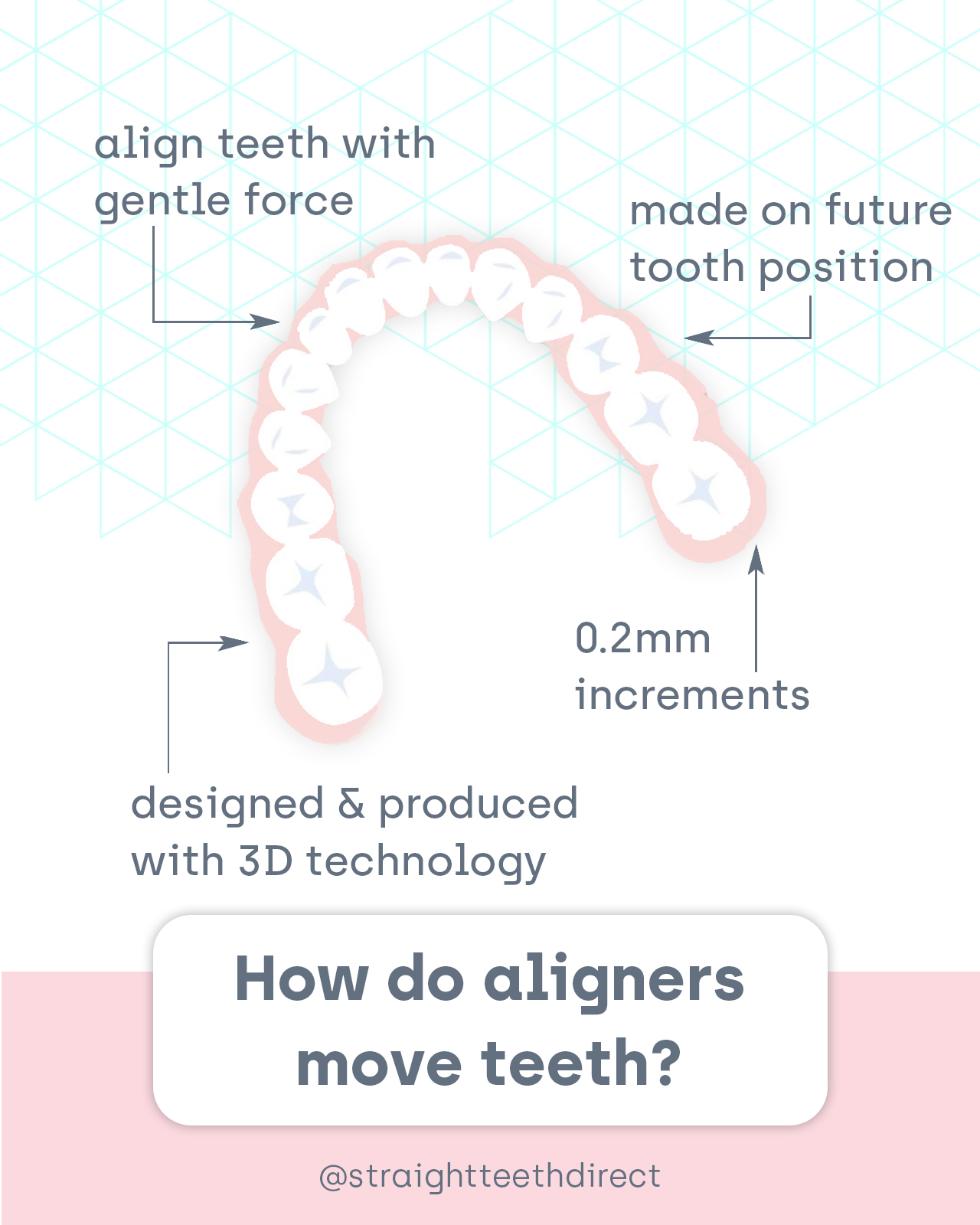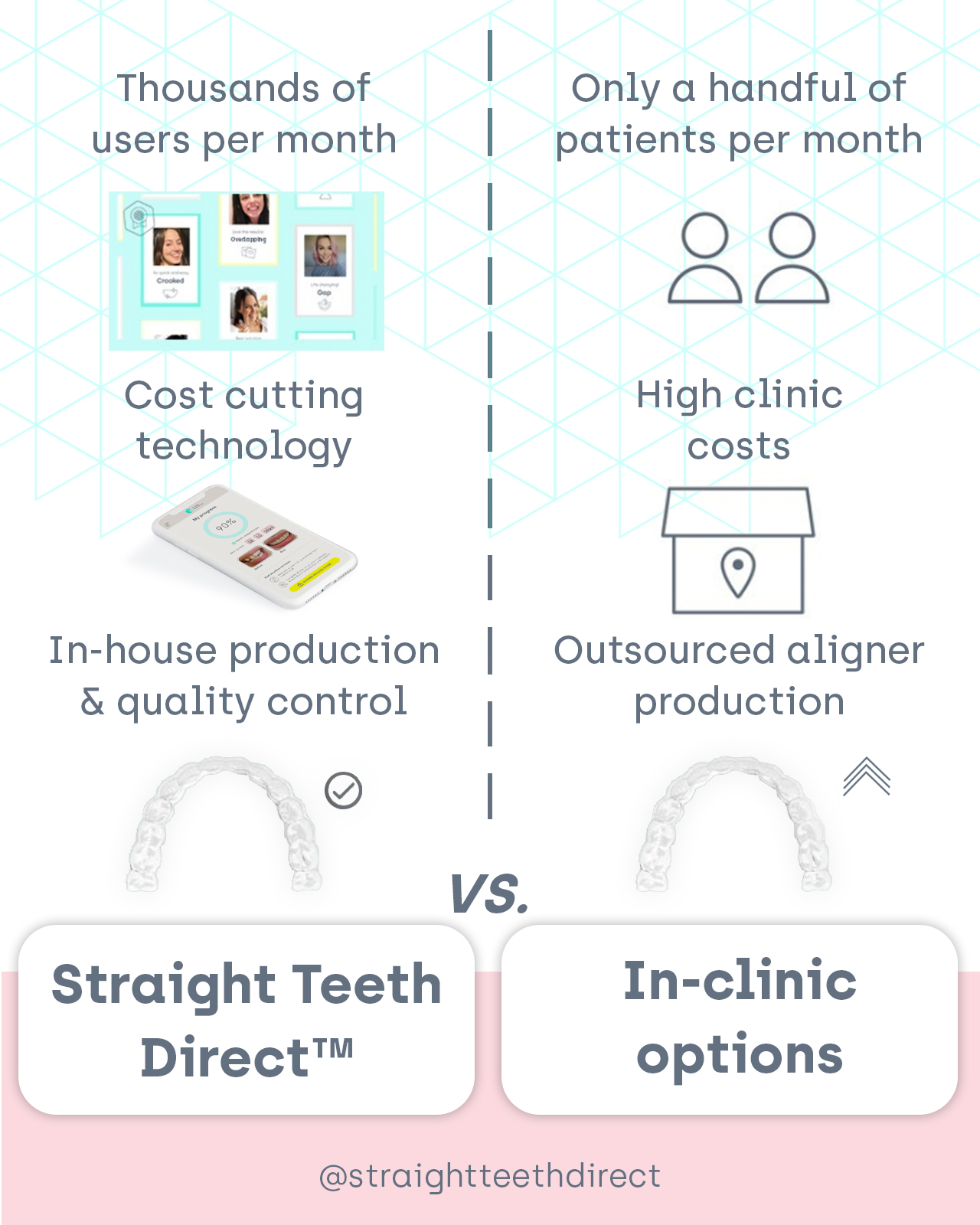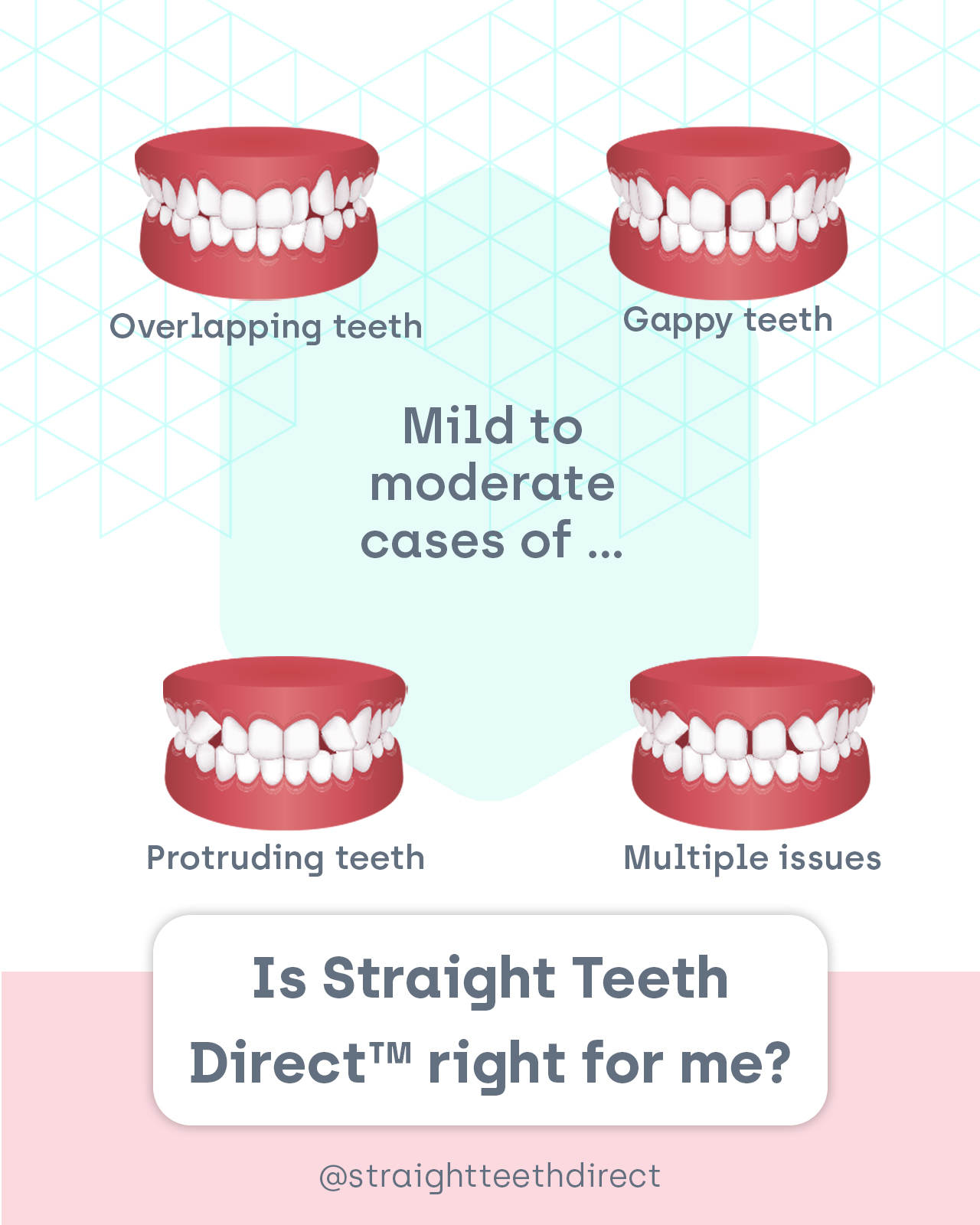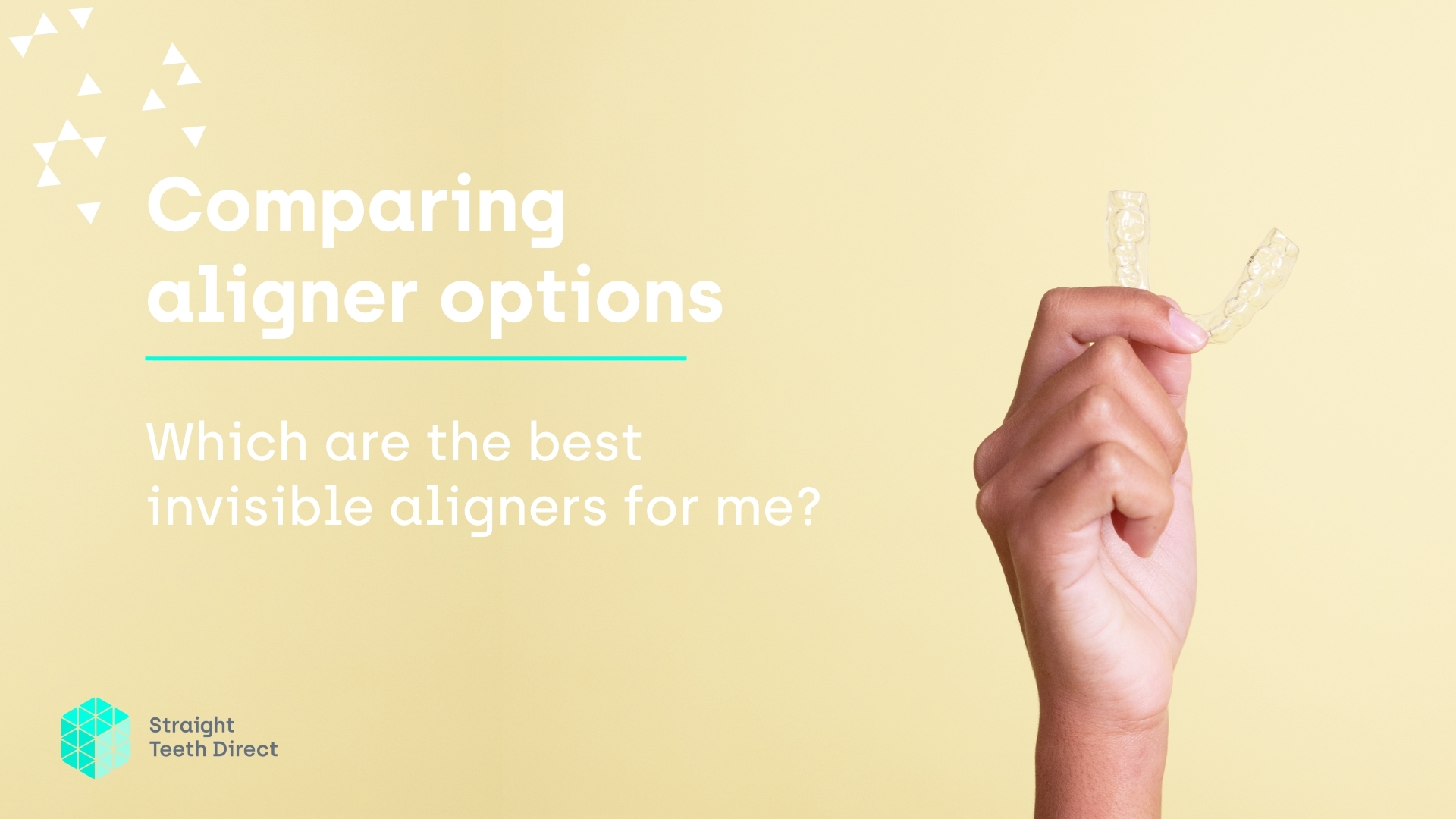
Which are the best invisible aligners for me?

What are invisible aligners
Before diving deep into comparing the best clear aligners out there, there’s a few questions we need to cover first. Do clear aligners really work? What are clear aligners after all?
Here’s a short overview of the basics:
Clear aligners are…
…medical devices designed to move and align your teeth over time, just like any other braces. After all, even the ancient Egyptians knew that applying constant pressure to teeth would make them move. Instead of fixed metal wires, aligners are made from medical grade, transparent plastic material and are removable. Each aligner applies enough pressure to move your teeth by up to 0.2mm over roughly 2 weeks of use. After one aligner finishes its job, a new one continues moving your teeth until you achieve the final result.
Are clear aligners and Invisalign the same?
Just like the brand name Kleenex has turned into a generic word for tissues, aligners in general are often falsely referred to as Invisalign. Invisalign was the first aligner company to bring this teeth straightening technology to the market in the late 90s, and there are many other aligner brands on the market, from small-scale, local providers to other global brands like ClearCorrect or SmileDirectClub.
Some people wonder if Invisalign is better than clear aligners? Now you understand that Invisalign is a type of clear aligner.
As with any service or products there will be variations in different aspects of the treatment delivery, treatment planning and the way teeth are programmed to move, right down to the aligners themselves, such as their material, the way they are cut and if they require clinic visits or not.
Which are the best clear aligners for teeth in Europe?
So…what’s the difference between Invisalign and Straight Teeth Direct?
While Invisalign was the first to come up with the technology and make it widely available across the globe, Straight Teeth Direct was the first company to offer aligners through a teledentistry model directly to customers in Europe and the rest of the world outside of the USA.
Since 2016, Straight Teeth Direct has consistently pushed the boundaries to democratise access to quality cosmetic teeth straightening with aligners with the mission not to be the highest selling aligner provider, but the best, prioritising a high quality, fully monitored aligner at-home solution for mild to moderate cases and developing innovative solutions to deliver the most affordable and comfortable aligners for anyone anywhere looking to achieve their naturally straightest smile safely and effectively.
Invasive vs non-invasive aligners – what does it mean?
What is invasive and non-invasive dentistry in aligner therapy?
Among the differences between aligner treatment at your local clinic vs. at-home, invasive and non-invasive aligner treatment is one that needs considering. Invasive treatment includes adding material to your teeth, such as attachments for aligners to hook onto (as used by Invisalign), using accessory appliances like elastics or rubber bands, and changing the shape of your teeth, using cosmetic bonding or interproximal reduction. Non-invasive treatment means your teeth are aligned exactly as they are. Think of it this way:
- Invasive treatment is designed to change your smile, making it look perfectly symmetrical by changing your teeth in an irreversible way (can only be achieved in-clinic)
- Non-invasive treatment is designed to help you improve the alignment of your teeth, how they sit next to each other, without permanent changes to your teeth (can be achieved remotely).
The pros and cons of invasive vs non invasive aligners
There are pros and cons with each approach. With the invasive approach, you can focus on more precise details. This may include certain types of rotation or bringing high canine teeth down, for example. However, it often includes irreversible changes to your teeth.
With a non-invasive aligner approach, you embrace the natural shape and size of your teeth. This means you’re aiming for your teeth’s best possible alignment without having intervention to change their structure. This type of approach allows you to preserve your enamel and reduce the risk of irreversible changes.
Other ways to improve your smile after aligner treatment
A beautiful perfect smile doesn’t stop at the alignment of the teeth, which is ultimately what clear aligners are designed to address. There are three key factors to a harmonious smile: tooth position, tooth shape and tooth colour. Once optimal alignment is achieved, minimally invasive procedures can always be performed to further enhance the beauty of your smile. These include minor changes to the shape of your teeth (using cosmetic bonding or teeth contouring) and their colour (teeth whitening, optimal oral hygiene and enamel care).
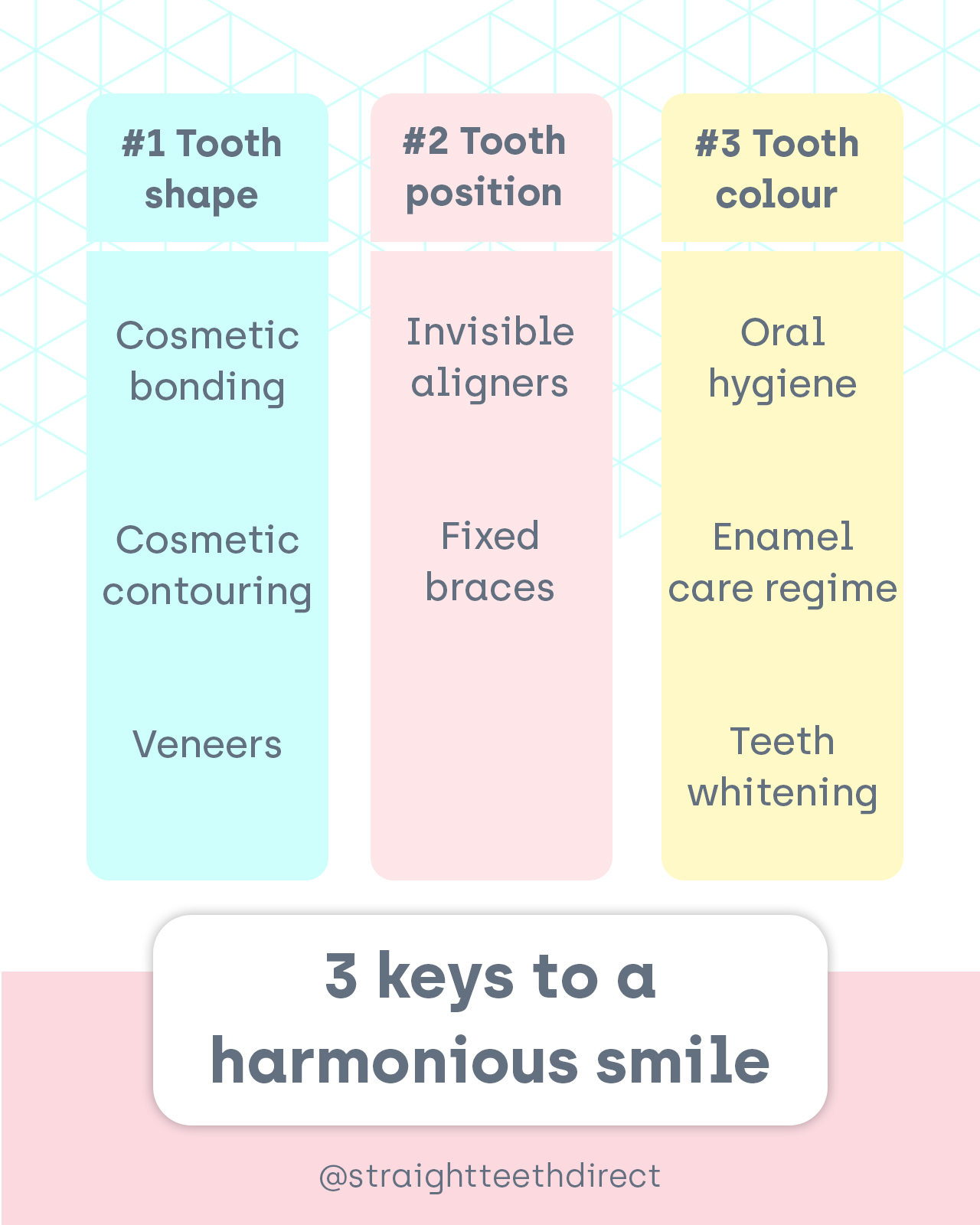
Aligners production: how, who and where?
Now, let’s shed a light on how aligners are made, who makes them, and where it takes place:
How are they made?
Treatment plans and aligners are individually made for each patient, so every step involved is customised to some degree…
Treatment planning
To define the individual aligner stages that your teeth will move through, a digital rendering of your dental structure, captured through a digitised physical dental impression, which is used to map out your treatment plan.
Treatment planning can be performed by an automated software that is then checked by orthodontists (as is the case with Invisalign). This allows patients to see an automated projection for their smile transformation before treatment – a rough draft, so to say.
At Straight Teeth Direct™, treatment plans are mapped out tooth for tooth by an orthodontist using computer assisted software, giving you a detailed, 20-page report of your current dental situation, treatment forecast and expected results. Additionally, you also receive a 3D simulation of how your smile will transform over time.
3D printing
Each stage of tooth movement is represented by a specific tooth position in your digital model. All these individual stages are 3D printed, each one slightly “straighter” than the last. Every 3D model also represents one pair of aligners.
Pressure forming
To finally create the aligners, a medical-grade plastic material is pressure formed over the models. Here’s a look at the process at our own aligner production facility:
Trimming and polishing
The last step is to cut out, file down and polish the aligners. Some producers may use robotics for these steps, while others are hand finished, depending on the size of the lab and company.
Who makes invisible aligners?
Aligners are custom medical devices that are made in a dental lab based on a prescription from a dentist.
-
In-clinic
Did you know that dentists are usually not involved in making aligners at all? They are outsourced to a lab or production facility with specialised dental technicians, high-tech equipment and machinery. Some labs specialise in aligner production, while other more traditional ones manufacture all sorts of dental devices (such as retainers, crowns, models, dentures, surgical guides, casting resin, veneers and more ).
-
At-home
Similarly to the in-clinic model, most remote aligner providers outsource the production of aligners to 3rd party labs and production facilities.
At Straight Teeth Direct, we are proud to have our own in-house aligner production facility and R&D lab. Our team of dentists, orthodontists and dental technicians work closely together to ensure you receive the highest quality treatment and aligners and any necessary changes are made to provide you with the best possible results and comfort.
Where are aligners produced?
Aligner production facilities are often based in countries where labour is cheaper: Invisalign for example has a facility in Mexico for production and Costa Rica for treatment planning, other aligner providers source from China, and less specialised facilities are based in Europe. This means there is always the risk that materials and quality vary between products and batches.
The Straight Teeth Direct lab and production facility is based in London, UK, where we keep a close eye on all processes, materials and quality and can ship directly to you.
Aligner comfort and look
Can aligner shape affect treatment?
Not all aligners are cut and finished in the same shape – more specifically, we’re referring to the edge of the aligners that touches your gums. There are 3 main shapes: straight, scalloped and rounded, each having slightly different implications for your treatment.
- Straight aligner edges are cut straight across, applying more pressure and giving more grip. However, these aligners are also more likely to irritate gums and can result in a more visible aligner.
- Scalloped aligner edges are cut to suit the line where each tooth meets your gums. This makes for a much more comfortable and invisible fit, though often lessening the pressure that can be exerted on your teeth.
- Rounded aligner edges are a blend between straight and rounded. They extend a little above the tooth edge and gently follow the gumline for a rounded, but not too fitted edge, providing plenty of force while being comfortable and less noticeable.
Different aligner manufacturers use different edge finishes. At Straight Teeth Direct, our dental experts have decided that a rounded edge delivers the best results while still being extremely comfortable. By filing and polishing every aligner by hand, we can also minimise the chances of uneven or sharp edges.
Are aligners painful?
Aligners have a very good reputation for being the most comfortable teeth straightening method available, especially when compared to fixed braces and lingual braces. As always, comfort is a scale, and it has to be noted that companies providing very short treatment timelines may rush larger tooth movements, causing more discomfort, pain and even damage to the teeth and bones if they are not ready for movement.
At Straight Teeth Direct we have developed our own unique aligner system consisting of two types of aligners, A and B. By alternating between them we make aligner treatment as comfortable and effective as possible:
- A aligners are more flexible and help initiate movement, preparing your teeth for the B aligners.
- B aligners are stronger than the A aligners and help stabilise your teeth and surrounding tissues in their new position ahead of the next aligner phase
- They are used in the sequence 1A, 1B, 2A, 2B… From number 7, only B aligners are used as the teeth are now accustomed to movement with the bone support around it fully activated and responding well to the pressure from the aligners.
This model allows for more systematic and careful tooth movement. Sudden large movements can be dangerous and very painful. So, using softer aligners first for the teeth to adapt and taking the transformation step by step prepares you and your teeth for measures, comfortable and safe tooth movement.
Factors to consider when choosing the right invisible aligner for you
| Important factors when choosing the right aligner solution | |||
| Straight Teeth Direct | In-clinic options | Other online options | |
| What does treatment include? | All aligners & refinement necessary to achieve your smile result, expert support, monthly progress reviews | Usually a limited number of aligners without refinements, in-clinic appointments & checkups | Usually a limited number of aligners without refinements, unknown level of support during treatment |
| Aligner cost | £1790 fixed price with no hidden costs | £3500 upwards, extra cost for additional aligners | Average price of £1950 |
| Goals and expectations | You want to achieve your naturally straightest smile without invasive treatment | Want to achieve your straightest smile, with or without invasive treatment | You want to achieve a straighter smile without invasive treatment |
| Support and aftercare | Expert support from your dentist, one set of retainers included, affordable aftercare plan to protect your smile for life | Support only during appointments, limited and expensive aftercare options | Automated help chats. No direct connection with a dentist, one set or no retainers included in treatment, no or limited and expensive aftercare |
| Role of your dentist | Central to your treatment and plan creation, performs monthly progress reviews, orders your aligners as necessary to ensure safe & effective treatment | Minimally involved in your treatment, checks progress and hands over aligners | Minimally involved in your treatment or not reachable at all |
What does aligner treatment include?
When choosing the best invisible aligners for you, one of the first things you will want to look at is what you are getting for your money. Aligner treatment should ideally include more than just aligners, so here are some questions you can ask yourself while researching:
- Are all necessary aligners to achieve your results included in your plan, even refinement aligners?
- Does your treatment include support and monitoring from a dentist throughout treatment?
- Will you receive retainers at the end of treatment to stabilise and protect your smile from moving back?
- Are your treatment and smile protected by any guarantees?
- If you are interested in cosmetic bonding to perfect your smile even more, is this included in the price?
If you find options that match your needs, you can begin looking into pricing and rank your options accordingly. Now, speaking of aligner cost …
How much do teeth aligners usually cost?
Aligner cost depends on a multitude of steps, and each step can make treatment more expensive, especially for in-clinic options. Between the cost of creating your treatment plan, outsourcing aligner production, shipping and delivery, clinic appointments and overheads, it’s easy to see how treatment cost can soar above £3500 for in-clinic options.
At Straight Teeth Direct, our mission is for everyone everywhere to have access to safe and effective treatment, at a fixed cost of £1790. We work hard to continuously optimise costs with full control over production and development at our in-house aligner facility. Our team of dentists works closely with our production team, ensuring quality, safety and effectiveness without cutting corners or external middlemen slowing things down.
Knowing your smile goals and expectations
Depending on your smile goals and expectations, your focus for treatment methods might be more clinic-based or more home-based. That is why it can be helpful to set your smile priorities in advance:
- At-home options fall into the category of cosmetic teeth straightening, aiming for the best cosmetic result or straightest smile while maintaining your natural teeth.
- In-clinic treatment gives you the option of a multidisciplinary method where you may be able to also address your bite and other aspects of your teeth (shape and size) to make more dramatic changes.
How much aligner support and aftercare are you getting?
Aligner support in-clinic vs at-home
In-clinic dentists are often quite restricted in how they can support you through treatment. Why? They can only really answer questions during appointments. Situations like lockdown restrictions or moving country/frequent travelling can quickly put a spanner in the works. This can even be the case for remote aligner options, depending on the company you choose.
At Straight Teeth Direct, we believe your dentist and constant support must be central to your treatment. The app-based support platform is available to answer your questions and perform monthly check-ups to monitor your progress. This provides uninterrupted care, even during lockdowns or if you change location.
Aligner aftercare in-clinic vs. at-home
All teeth straightening treatment must be followed by proper retention. Many dentists and online providers don’t offer maintenance plan solutions to protect your new smile, which will almost certainly end in relapse misalignment in the future.
With Straight Teeth Direct™ treatment, your first set of retainers is free and will help stabilise and protect your new smile. You also have the option to join our Maintainer Plan, which will give you yearly retainer deliveries to keep your smile on point for life.
What is a dentist’s role in aligner treatment?
The extent of your dentist’s involvement in treatment will vary depending on the route you choose:
-
In clinic aligners
It’s often assumed that in-clinic is preferable just because you get to physically see a dentist, but your dentist’s role is quite limited to checking the fit of aligners and making sure your progress goes according to plan. If changes are needed, they have to inform the aligner provider to arrange them. They can, however, perform more invasive procedures like adding attachments for your aligners to hook onto, IPR or contouring.
-
General online aligners
One of the main complaints for at-home aligner options is that there is little involvement of dentists, with limited feedback or insight from professionals and often automated replies and monitoring. More often than not, all aligners are sent in one delivery at the beginning of treatment, meaning the user is fully responsible for wearing them rather than having a dentist monitor their progress and deliver aligners as required.
-
Straight Teeth Direct aligners
Our clinical team is involved in your treatment from beginning to end, but what is even more unique in our model is that our team of dentists and the lab technicians always work together to make the best decisions for each case. Your dentist also personally oversees the creation of your plan, any specific support required throughout your journey and the monthly progress reviews, manually replying to every user. These reviews allow them to precisely monitor your progress and order the next aligners accordingly.
For more information, read our dedicated blog on aligner monitoring.
What is it like to use Straight Teeth Direct?
As always, we prefer to let our community speak directly when it comes to reviewing our service and product. We have collected heaps of genuine testimonials, videos and before/after results, so here is how you can access them all:
Before & after teeth straightening results
Wondering how impressive aligner smile transformations can be? Then head over to our Online gallery where you can find hundreds of documented before/after teeth straightening results. Click on the images to read the comments from each user!
Aligner video testimonials from regular customers
Many of our regular yet awesome users have shared video reviews of their treatment journeys! These provide great insights into their daily life with aligners and aligner top tips. We have over 70 videos available on our YouTube channel – just head to Playlists and choose “Straight Teeth Direct Aligners Reviews”, or pick any of the other topics or videos to learn more about invisible aligners.
Online aligner reviews
We are so proud to have maintained a good reputation since our launch with consistent ratings above 4.8/5 on Trustopilot and Reviews.io as well as other independent comparator sites.
Join our community on Instagram
Over on our Instagram account, we share lots of helpful tips on aligner life, educational content, behind the scenes, user transformations and more every week! For an easy overview of some impressive user transformations, click the Before/After highlight.
Our community is also very active, with many accounts dedicated to documenting their aligner journey. We also host monthly giveaways for those who tag us with @straightteethdirect and #MySmileDelivered!
Are invisible aligners suited for everyone?
Remember: not all cases are suitable for all treatment models. So, make sure you go through a screening process before committing to treatment:
- In-clinic your dentist will advise you on the best invisible aligners and options for you.
- Online providers have online screening forms, but these are often automated and funnel you straight into buying dental impressions. Down the line, you might be told you’re not suitable after all.
At Straight Teeth Direct, the free e-consultation takes roughly 5-10 minutes with a few questions and pictures of your teeth. It is evaluated by one of our dentists and you will find out if you’re suitable within 24h (usually much less). You can also ask any questions via your secure app account, and are covered by our unique Suitability & Impressions guarantee, so you can be sure this method will work for you!
Sustainability efforts in dentistry – and why this is important!
As medical devices, aligners need to be made from the best materials and fulfil their medical criteria above all else. But with each user often requiring anywhere between 20 and 60 individual aligners, you can imagine how much room for improvement there is in terms of sustainability. We have been working hard to improve our eco-friendly purchasing and production activities and are constantly innovating to make our processes more sustainable:
Are plastic aligners recyclable?
Some companies, like Invisalign, make aligners using a multi-layered material. Unfortunately, this is non-recyclable because the different layers can’t be recycled the same way, but also can’t be separated.
Straight Teeth Direct aligners are made from fully recyclable, BPA-free plastic. If unused or clean, they can be recycled along with other plastics (though we recommend you keep your last 6 sets of aligners in case your teeth move again).
Sustainable aligner packaging
Let’s face it…to the untrained eye, all aligners look the same! That is why each set must be individually packaged and labelled to ensure correct treatment sequence. The cheapest way to do this is with plastic bags, but you can imagine how much waste this produces.
At Straight Teeth Direct, we have been able to source biodegradable grip-seal pouches that can be decomposed by microorganisms. Just dispose of them with your biowaste or residual waste.
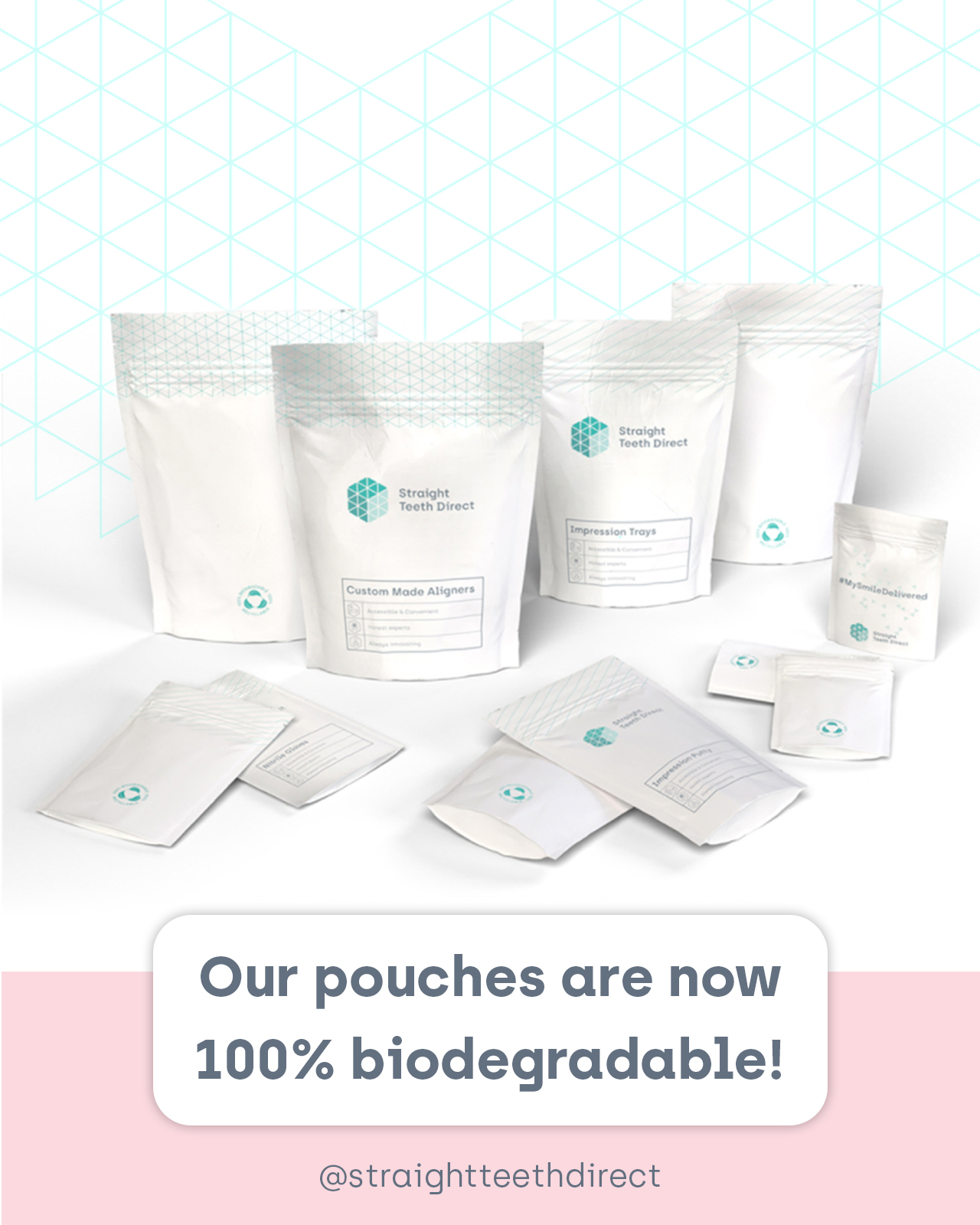
Eco-friendly teledentistry model
Remote treatment means less carbon emissions on travelling to and from clinic appointments, as well as less PPE for your dentist! The Straight Teeth Direct facility produces everything in-house. Meaning we have cut out intermediary transport routes compared to other aligner providers. All this allowed us to reduce even more CO2.
Verdict: Which are the best invisible aligners for you?
In the end, there is no perfect, one-size-fits-all answer to your dream smile! Your decision should be based on your own needs and preferences as well as professional guidance on what will achieve your optimum result. It’s always best to go for an experienced orthodontist who can ensure your interests and smile are in good hands! Here’s a little checklist to cover all the important factors when deciding on a treatment option:
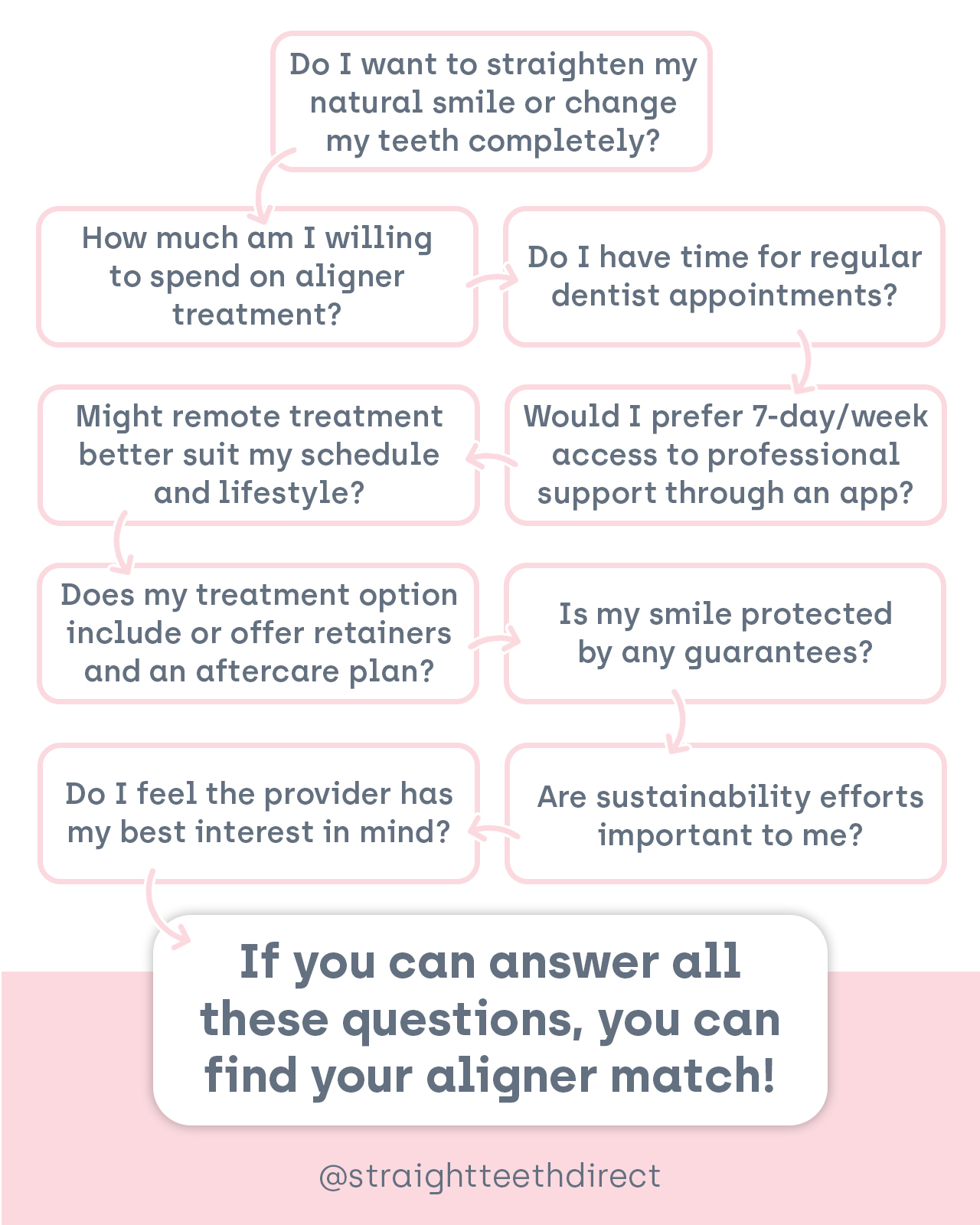

Still thinking about it?
Fill in your email to receiveyour free guide!



















